Table of Contents
Voodoo refers to a monotheistic and syncretic religion, which resulted from the combined religions of the native Africans and Roman Catholics. Mainly practiced in New Orleans and Haiti, you can see Voodoo being recognized in other locations, too, particularly in the Caribbean.
Voodoo has several definitions. The most socially acceptable and common one is that it is the act of worshipping more than just one God. It also worships spirits, ancestors, saints, and angels. This practice combines Catholic saint worship, witchcraft, Native American practices, and folk magic.
Contrary to what most people believe, Voodoo does not solely revolve around dark witchcraft and black magic to harm people. Most of the real practitioners of Voodoo state you can’t do evil spirit worship here. So, it is time to finally set the record straight and understand that this practice is not as evil as others have claimed and believed it to be.
The spells associated with Voodoo are useful, powerful, and authentic. You can expect them to work effectively in various circumstances – among them are in the fields of finances, career, relationships, and love. However, it is safe to say that this religion has extensive coverage. Provided you use and practice it correctly, you can improve various aspects of yourself and your life through it.
How Voodoo Started
The original roots of Voodoo can be traced back to Africa. It was brought to America by the African slaves after they were sold to white slave traders. Specifically, Voodoo started after the slaves in Africa carried their native traditions upon their forceful transport to the New World.
During that time, they were prohibited from practicing their faith and religion. With the restrictions and prohibitions set in place, these African slaves began equating the Gods they knew with the saints recognized in the Roman Catholic Church. They did that to sidestep the restrictions associated with the practice of their religions.
It also prompted them to do rituals with the help of the imagery and items used by and recognized in the Catholic Church. They incorporated the beliefs of the Catholics into their religious practices. Most believed it was the only way for them to continue practicing what they initially believed in. After all, restrictions meant they had to hide their former religious practices. They also did that because Voodoo naturally allowed them to incorporate saints into their practice.
It was also when Voodoo contributed to helping everyone feel what it was like to be free – even if they did not have the right to practice freedom yet.
African Voodoo
Of course, you would not completely understand Voodoo if you do not dig deeper into its roots. As mentioned earlier, this practice started in Africa. It began in Fon and Kongo, known as African kingdoms, around six thousand years back. It means deity, spirit, or sacred.
Presently, Fon is part of Southern Benin, a region referred to by many anthropologists as Voodoo’s cradle. Millions of people continue practicing Voodoo even today, especially in Ghana, Togo, and other Northwestern African countries. Voodoo is mainly an oral tradition.
Aside from believing in spiritual possession and several gods, African Voodoo also differs. It consistently venerates or worships ancestors, using particular objects or rituals to spread magical protection. It also offers animal sacrifices to show respect to a god, ask for favors, or show their gratitude.
Africans also practice Voodoo by using fetishes and certain items with the power or essence of specific spirits. Ceremonial instruments, music, and dances that use elaborate masks and costumes are common in African Voodoo practice. Moreover, they do divination by interpreting physical activities.
You can also see most of its practitioners associating foods, colors, plants, and other objects, with a certain Loa, a Voodoo spirit designed to offer guidance in various aspects of life, like spirituality, healing, protection, success, sexuality, and death.
With that in mind, you can look at Voodoo as similar to other traditional religions in the country.
Most observances also look like they are partly religious service and celebration with rhythmic music, songs, and dances. Several rituals performed in African Voodoo also use natural landscapes, including trees, mountains, and rivers.
African Voodoo turns the most mundane objects, such as bottles, pots, or slaughtered animals’ body parts, into something sacred they can use in rituals. This is possible through the consecration and decoration of the said objects.
Voodoo’s Most Important Branches
Now that you know how Africans practice Voodoo, it is time to know more about the two most important branches – the Haiti Vodou and the New Orleans Voodoo.
It is still crucial to understand each branch separately, so you have a clear idea of what makes the two similar and different and how both originated.
The Haitian Vodou
Haitian Vodou started around the 16th and 19th centuries. It began after combining traditional religions carried by the slaves in West Africa to the Hispaniola Island with the teachings spread by French colonialists regarding the Roman Catholic religion. The French colonialists had full control of the island.
Many of those who practiced Vodou participated in the Haitian Revolution that occurred between 1791 and 1804. It was when they contributed to conquering the government ruled by the French colonialists. It also contributed to abolishing slavery and the founding of what we can view as modern-day Haiti.
When they were still slaves, a code prevented them from practicing the religion they usually practiced. The slave code even required them to convert into Christians.
The fact that the slaves were prohibited from observing and practicing their religion freely and openly caused them to borrow several elements of the Roman Catholics as a means of protecting their spiritual beliefs and practices. It resulted in the execution of the syncretization process, which had a major impact on the practice of Voodoo in Haiti.
After the Haitian Revolution, the church governed by the Roman Catholics also left the island. For a few decades, the absence of Catholics resulted in Vodou turning into Haiti’s most dominant religion. During the 20th century, the increasing emigration rate caused Vodou to spread to other parts of the world.
In the latter part of the 20th century, people noticed a significantly growing connection between Vodou and some relevant traditions in the Americas, like Brazilian Candomblé and Cuban Santeria, and traditions practiced in West Africa.
Common Beliefs in Haitian Vodou
One thing noticeable about Haitian Vodou is that it has no central institutional authority and liturgy. It also has communal and domestic variations.
You will also notice variations in beliefs and practices from one congregation to another. One variation would be an extended family being a significant component of a single congregation. Other common beliefs of Haitian Vodou include:
Bondyé and Loa (Lwa)
Haitian Vodou is mainly a monotheistic religion as it teaches the presence and existence of only one supreme God. This supreme entity built the universe, which Vodou practitioners recognize as Bondyé.
With that in mind, they also believe there is no point in directly approaching Bondyé. Instead, what Haitians often do is state “si Bondyé vie,” which means “if Bondyé is willing” in their rituals. This is to signify their firm belief that everything will take place based on the will of the deity rather than on their needs expressed through prayer.
Vodou is also recognized as a polytheistic religion, teaching practitioners that a Loa (Lwa), a pantheon of deities, exists. This term refers to spirits, geniuses, or Gods that most Haitian Vodou practitioners believe in. With that, they can offer protection, advice or counsel, and help to humans, provided they participate in ritual services.
All Vodou practitioners also regard Lwa as Bondyé’s intermediaries – with each one of them displaying a unique personality. They also associate or link each Lwa to a specific color, object, and day of the week.
Other Famous Beliefs
Haitian Vodou also believes in ethics and morality and that every gender has unique and different roles to play. Being a recognized religion, it mirrors the daily concerns of people. It also focuses on providing techniques that will help mitigate misfortunes and illnesses. Practitioners also believe those who do everything to survive are among the most highly ethical people.
In terms of morality, you will notice that Haitian Vodou does not implement too many rules. This means that the morality in this religion is not solely based on rules, but rather it is contextual based on the situation and the person subjected to it. According to Haitian Vodou followers, they consider someone as morally upright if he lives in accordance with his real character and the tutelary Loa (Lwa).
Aside from that, they put a lot of emphasis on conformity, support, group cohesion, and uniformity. The religion tries to strengthen family ties. They also emphasize showing respect to the elderly and view the extended family as a highly vital part of Haitian society. Most followers and practitioners of the religion do not also tolerate Maji, the term used to describe the process of using supernatural powers for evil and self-serving purposes.
Common Practices
Haitian Vodou can be viewed as a religion composed of influences derived from several other religions. Despite the numerous obvious additions and integrations, Haitian Voodoo still strongly resembles the Voodoo practiced initially in Africa. For instance, they have designations for those who will carry out religious services and activities and offer traditional folk remedies, namely the houngans (priests) and mambos (priestesses).
Anyone who intends to serve as a houngan (or mambo) needs to participate in an apprenticeship program. They have to act as initiates with other recognized leaders in the community instead of just participating in a worship center. There is also what is referred to as honfour in Voodoo, which is where ceremonies occur. It is, therefore, the counterpart of a sanctuary or temple in other religions.
Aside from that, there are also other aspects of Haitian Voodoo that make their practice more recognizable. These include:
- Spiritual Possession – Similar to the Voodoo practiced in Africa, Haitian Voodoo also considers possession one of its most vital aspects. Practitioners refer to a person possessed as a horse with the possessing Lwa riding on it. One thing that helps them identify the possessed is when he/she has unnatural movements, speaks using unknown/unfamiliar languages, or delivers direct and clear statements to others who practice and follow the religion.
- Sacrifice and Offerings – Another element you will most commonly see in Haitian Voodoo is sacrifice. You can see them sacrificing animals, like chickens and goats, in various ceremonies. The reason is that Vodou strongly believes how important it is to feed the Loa (Lwa). They often do it at home or in communal spaces.
There is also a yearly feast (organized by a mambo or oungan) for the congregation, requiring congregants to sacrifice certain animals and offer them to the Lwa. Those who practice the religion also offer drinks and foods based on the exact Lwa they want to dedicate the feast or ritual to. Note that every Loa (Lwa) has different food preferences, so it is crucial to offer those they prefer during the ritual.
For instance, Danbala prefers white foods, notably eggs.
- Ritual Objects and Clothing – Haitian Voodoo also makes a point to include certain objects, decorations, and clothing in their rituals and celebrations. Several also use Kongo (medicine) packets to hold items and herbs with medicinal or healing properties.
Many worshippers bring drapo (flags) with them all the time to demonstrate their respect for the spirits. You will also notice many using and playing various drums, rattles, and bells to invoke and calling the Lwa.
Other ritual items and objects used by those who practice Haitian Voodoo are decorated bottles, calabashes usually filled with food offerings, and dolls. They often put these items on altars. A few of these objects are now major components of Haitian crafts and artworks.
- Altars and Shrines – Haitian Vodou followers also practice their faith and belief with altars and shrines. Several altars even hold lithographs of saints recognized in the Roman Catholic religion. During the time chromolithography was developed, it immediately influenced the imagery used in Vodou. It resulted in the widespread access of images of saints derived from the Roman Catholic Church with their corresponding Loa (Lwa).
Vodou practitioners also made it a point to use various materials available to them to make shrines. There are also certain places, aside from the temples, that practitioners used when performing rituals. For instance, they often perform rituals in cemeteries, making the perfect place for rituals, particularly for those who want to approach and talk to dead spirits.
Many practitioners also choose crossroads as the perfect spot for rituals. The reason is that these are points that provide access to the world of the spirits. It is also possible to use Christian churches, markets, fields, the sea, and rivers for a Vodou ritual.
- Healing – Healing is also a common and essential practice in Vodou. The practitioners usually receive amulets and charms from oungan and Mambo. Also known as pwen or points, these charms and amulets are often based on plants known for their healing powers.
Usually a bath, which uses various ingredients that aid in healing, will be prescribed. Haiti also has several herb doctors offering herbal remedies to treat a wide range of ailments. However, these herb doctors are different as mambo and oungan, so expect certain limitations regarding the issues they can heal or handle.
- Pilgrimage and Festivals – Haitian Vodou also practice celebrating birthdays for a specific Loa (Lwa). This regularly happens when the Roman Catholics hold the All Souls and All Saints days. These celebrations require them to dedicate special altars designed for the Lwa whose birthday they want to celebrate.
They also honor the dead by holding celebrations that are often conducted in Port au Prince’s cemeteries. This celebration comes in a festival with participants dressing up in a way associated with death. Some outfits, therefore, are purple and black coats, sunglasses, top hats, and black veils.
You can also see pilgrimage being a significant part of the culture of Haitian Vodou. Those who undertake the Haitian pilgrimage usually need to wear colored ropes around the waist or head.
Voodoo has now become an integral part of several Haitians’ daily lives and activities, as over half of the Haitian population practices this religion. It is also the reason it has a crucial role in the history of the place.
The Louisiana (New Orleans Voodoo)
The second most important branch of Voodoo we have to talk about is the Louisiana Voodoo, otherwise called the New Orleans Voodoo. This specific branch refers to a collection of spiritual practices and beliefs all developed based on the traditions followed by the African diaspora within Louisiana.
While many confuse Louisiana Voodoo with Haitian Vodou, they are different. The one from Louisiana emphasizes using Gris-gris, Hoodoo occult paraphernalia, snake deity or the Li Grand Zombi, and voodoo queens. Louisiana Voodoo even played a role in introducing gris-gris and voodoo dolls in America’s culture.
New Orleans or Louisiana voodoo came because of the enslaved West Africans who made it a point to merge their religious practices and rituals with the local Roman Catholic population. One important fact about New Orleans or Louisiana voodoo is that it strongly connects with the spirits, ancestors, and nature.
Voodoo was bolstered even more after its followers, who escaped from Haitian Revolution in 1791, moved to New Orleans. During this time, those who practiced Voodoo in North American colonies lived more complicated lives. The French colonists implemented more aggressive measures to suppress their rituals and avoid future uprisings. This is mainly because it was said that the revolution started after a Vodou ritual triggered slaves to be possessed by a deity.
Unlike their time in Haiti, the slaves who moved to Louisiana were not aggressive or rebellious against their masters. What they did, instead, was use charms and amulets to make their everyday lives easier. These Voodoo practitioners and followers used these items primarily for protection, healing, and guidance. They also believed that the charms and amulets were among the things that connected them with the people they loved. There were also charms believed to hurt their enemies. These items are what they used when making curses.
The slaves continuing to practice Voodoo turned into an extremely important part of the New Orleans culture. You can even see voodoo kings and queens becoming political and spiritual figures of the 1800s New Orleans power. It also caused the spread of the religion in other places, like across the Mississippi Valley, that still reported famous voodoo ceremonies up to 1891.
New Orleans (Louisiana Voodoo) Major Beliefs
One major belief linked to the New Orleans (Louisiana) Voodoo is there is only one God who will never interfere or intercede with people’s lives. Most of them believe that the spirits can preside and interfere with one’s life. New Orleans or Louisiana voodoo practitioners believe that the spiritual forces are either mischievous or kind and capable of shaping their daily lives by interceding and interfering with them.
With that, they strongly recognize the importance of connecting with spirits. They can do that through music, dance, and singing. It is also possible to establish a spiritual connection by using snakes that mainly represent Legba, the spiritual conduit to all the others. The Voodoo serpent symbolizes not only healing knowledge but also the strong connection between the Earth and Heaven.
Singing is also a vital part of performing voodoo rituals. Practitioners sing to show how they worship God and the spirits. Usually, you can witness them singing while also clapping, stomping their feet, and patting. Drum playing was also part of the ritual when they were still slaves, and they did that only during the public ceremony held in Congo Square every week.
The songs played in rituals often describe the unique personalities of each deity. They mention the deity names, their origins, likes and dislikes, strengths, weaknesses, and responsibilities. Several songs reflect the tunes used in the Roman Catholic Church, and there is a connection between the saints in that religion with the deities famous in Africa.
Aside from songs (music) and dance, New Orleans Voodoo also uses gris-gris dolls, talismans, and potions. You can still find these items in households and stores throughout the city. This reminds everyone of the fascination of New Orleans, with not only spirits but also mystery and magic.
They also practice Voodoo through spiritual baths, personal ceremonies, prayer, and readings. Nowadays, those who continue to practice it also believe that it is a significant help in curing anxiety, depression, loneliness, and addictions. Many also use it to offer help to the sick, hungry, and poor.
Famous Characters in New Orleans Voodoo
New Orleans Voodoo also introduced a few of the most famous characters to the world. There are famous Voodoo queens who make up the religion’s most influential female practitioners, and they are known for exercising their immense power in communities. These led the majority of ritual dances and ceremonial meetings.
Among the most powerful and famous names in New Orleans Voodoo are the following:
Marie Laveau
Marie Laveau (1794 to 1881) was the most popular Voodoo queen during her time. Many even call her the most powerful and eminent of the many voodoo queens in New Orleans. Even the wealthiest people, planters, businessmen, lawyers, and politicians approached her to ask her advice. They asked for her opinions whenever they needed to decide on business-related and financial matters. Laveau also made it a point to help the enslaved and the poor.
Laveau was so powerful that she dominated even the other renowned leaders of Voodoo in New Orleans. She was also a devout Catholic, so she urged her people to participate in the Catholic mass celebration. With her strong influence, it was no longer surprising to witness Roman Catholic practices being adopted into Voodoo’s belief system.
People also remember her for how she showed compassion for the poor and less fortunate. Besides that, it was discovered that she was fond of filling her home with images of the saints, candles, items, and altars designed to keep it protected from spirits.
Even up to the present, Voodoo practitioners recognize Laveau’s role in the practice of their religion. As a matter of fact, her gravesite became a tourist attraction. Voodoo practitioners and believers even continue to send gifts to her gravesite. She continues to be a prominent figure in Louisiana Voodoo and a major part of the entire culture of New Orleans.
Doctor John
If there is a famous queen in Voodoo, there is also Dr. John, who is the most popular king in New Orleans Voodoo. Born in Senegal, Dr. John was kidnapped and brought to Cuba as a slave. Later on, he moved to New Orleans, where he participated in the Voodoo community.
It was during this time when his skills in Voodoo’s medicinal aspects were recognized. People saw him as an incredible healer. Many believed that he could resurrect even those dying patients through Voodoo rituals. He eventually became Marie Laveau’s teacher and is recognized today as one of the most prominent leaders in Louisiana Voodoo.
The Modern New Orleans Voodoo
At present, many still practice Voodoo in New Orleans. Practitioners do it mainly to offer their service to others. Many also perform Voodoo to influence life events as they connect to spirits and ancestors.
Usually, Voodoo practitioners hold rituals privately. You can also find a lot of places that provide ritual assistance and readings. New Orleans even has a formally established temple for Voodoo, the Voodoo Spiritual Temple, that you can find across Congo Square.
You can also find museums in the city where you can learn about New Orleans Voodoo history and their famous rituals, altars, and artifacts. Voodoo in the city was even commercialized during the early parts of the 21st century.
Commercial interests pursued the capitalization of the strong interest of people in this religion. You can even see shops selling gris-gris, powders, candles, and charms today that cater to the needs of practitioners and tourists who want to learn more about Voodoo.

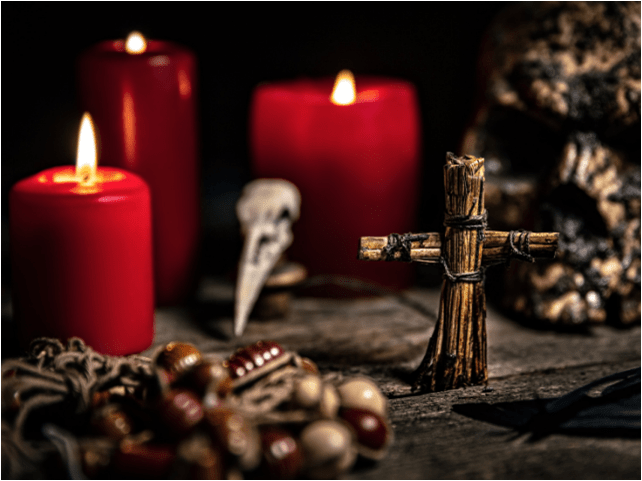
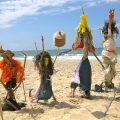
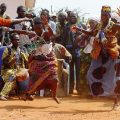
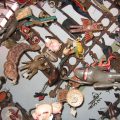
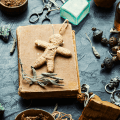
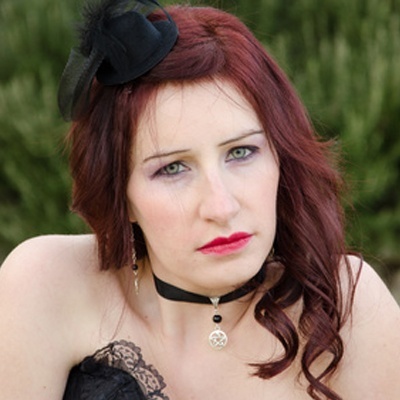 I love to write books about alternative religion, occult, and spirituality. My books are written for everyone in an easy to read and understandable style.
I love to write books about alternative religion, occult, and spirituality. My books are written for everyone in an easy to read and understandable style.